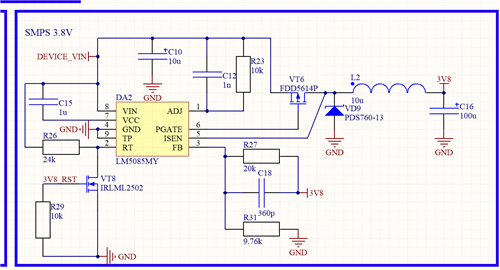Hi! I have a strange problem with LM5085 in production PCB, wondering what could possibly go wrong here.
PCB has 3 DC/DC converters (all of them with LM5085) - +5V, +3V8, +3V3. All of them created in webench with Vin range around (9...36)V. Before that trouble appers we've used 12V to supply the PCB and everything worked properly.
But when i've tried to supply PCB with 24V I've found that +3V8 rail began to fail. Futher research showed that it's not a current limiter (replaced Radj with 100k). Under medium load (about 400 mA, DC/DC calculated for 4 Amps) there is random voltage drops about 1V down.
Here how +3V8 looks without load (Vin=24V):
Here how looks +3V8 with 10Ohm load (Vin=24V):
Same trouble exists in +3V3 power source (but it's designed for 0.5 Amp load).
Here is my schematic (currently R23 replaced with 100kOhm):
Any thoughts what possibly could go wrong?


